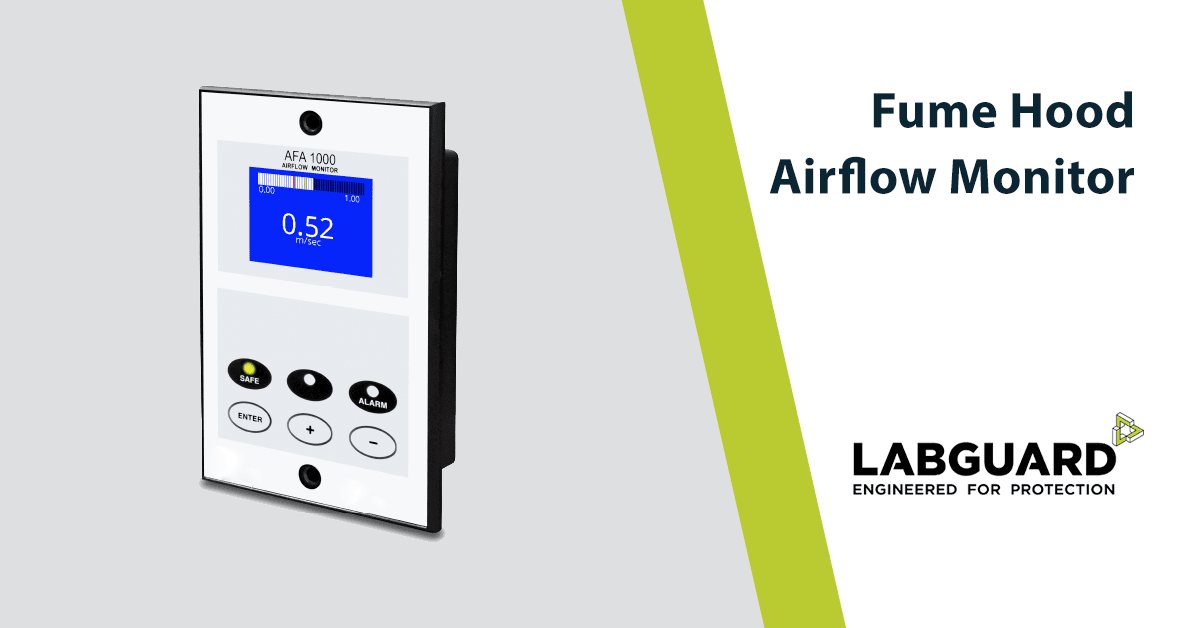A fume hood is essentially a safety device. It protects the user from hazardous airborne chemical contaminants. It is therefore important that fume hood performs this primary function without fail, at all times.
A small piece of an instrument called Airflow Monitor (AFM) helps this cause by constantly monitoring and indicating the airflow status. AFM is mounted on the side post of a fume hood, generally at eye level. A basic model monitors and displays the face velocity and has audio-visual alarms for unsafe conditions. The face velocity is usually displayed in meters/sec. Users must pay attention to the display and alarms and take corrective actions if needed.
Working Principle
For a constant air volume (CAV) fume hood the AFM works on the principle of sensing the differential pressure as an index of velocity. The face velocity is measured at the plane of the fume hood opening. AFM uses thermal or pressure transducer sensors. These are mounted on the instrument as well as inside the hood. AFM senses the pressure differential through these sensors and converts the data to a readable velocity. The face velocity is displayed in real-time. Audiovisual alarms on the face of AFM go out when the face velocity is out of safe range. Once the corrective actions like closing the sash are taken the alarms stop. Face Velocity is displayed at all times. Users can check the safe working status of their fume hood at a glance.
For a variable air volume (VAV) fume hood the AFM performs more actions than just displaying the face velocity. As the VAV hood must have safe face velocity under all sash opening conditions, the AFM additionally sends a control signal. This signal is delivered to the actuator-driven damper located in the throat of the fume hood. The damper opens or closes based on this signal, thereby ensuring safe velocity under all sash positions. In this case, it is called the Airflow Monitor cum Controller.
Advanced AFMs perform still more functions. They electronically ‘talk’ to the room air supply controllers, exhaust system blowers, and also log data for future reference. This ensures a higher degree of safety and energy efficiency in the laboratory.
AFMs need frequent testing and calibration. The calibration data must be recorded and certified. An uncalibrated AFM is as bad as a nonexistent AFM. The fume hood is unsafe to use if the AFM is not functional and calibrated.
While users must take corrective actions when the face velocity goes out of range, they must never fiddle with this instrument. Also, the calibration procedure must not be carried out by the users. In case of the slightest doubt, they should seek the help of the engineering team.
The airflow monitor is a sentry on the duty of keeping us safe. Users must respect this fact.


